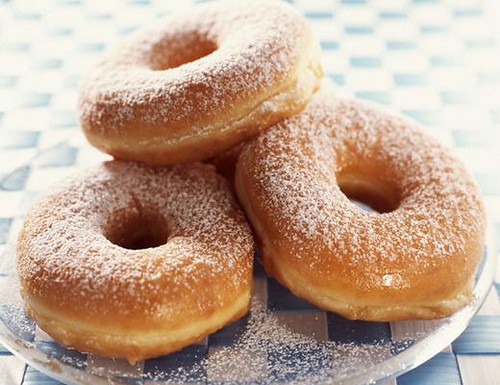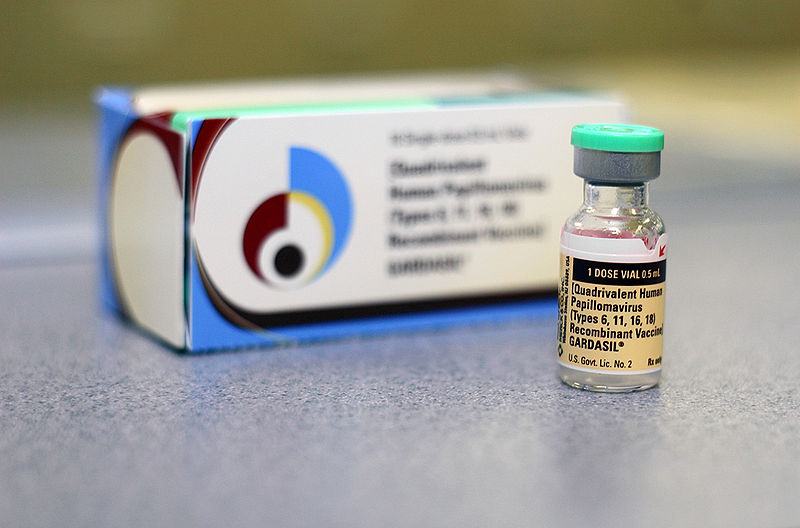By Yeelena Faustino
As we enter, what seems like, the final stretch of the pandemic more people are lining up to get vaccinated. According to the Center for Disease Control and Prevention (CDC), over 200 million total doses have been administered. So, how do government officials and organizations convince Americans to get vaccinated? The answer is simple, incentives. And, they seem to work.
On Tuesday, May 11, The governor of Ohio Mike DeWine announced that he’ll be giving away $5 million to five ($1 million each) adult Americans who get vaccinated. But wait there’s more, DeWine will also be granting five full-ride scholarships to Ohio state schools. The only catch is that these incentives only apply to Ohio residents. Similarly, West Virginia’s governor took a similar approach in order to get more teens vaccinated. Gov. Jim Justice is offering $100 bonds to teens.

Lastly, on a more national level, donut giant Krispy Kreme is offering a free original glazed donut to individuals who show their vaccination cards.
From donuts to cash, do these incentives actually work? According to a New York Times article by Lynne Vavreck, 63% of Americans would get the vaccine if it meant they’d no longer have to wear masks. And, 50% would get vaccinated if they still had to wear masks. Yet, these are data points from the non incentivized.
Vavreck’s article also reports those who were incentivized with monetary prizes ranging from $25-$100 were one third more likely to get vaccinated. Therefore, it seems as if incentives may work. However, some people are still wary of receiving a vaccine even with incentives due to lack of trust in the federal government. Vavreck states, “a quarter of the unvaccinated say they just don’t trust the government’s motives.”
Backtracking to DeWine’s method of giving away millions, is that a smart idea? His million dollar incentives are only for five adults. Therefore, it seems as if it wouldn’t really make a dent in the number of Americans fully vaccinated. I believe if DeWine has $5 million to spare on incentives, he should make the cash prizes smaller and increase the number of adults. That way, he can vaccinate more adults and give out more cash prizes.
It’s interesting to see how bad Americans want to return back to normal, but they won’t get vaccinated. Data from Vavreck’s article shows that the unvaccinated are participating in more regular activities than those who are vaccinated. For example, 53% of unvaccinated people said that in the last two weeks they’ve dined in at a restaurant. Contrastignly, only 32% of fully vaccinated people have dined in at a restaurant.
The light at the end of this long pandemic tunnel is getting closer. But, can we expect a full return back to normal even with those who refuse to get vaccinated? It’s hard to tell, but I hope so.


I really enjoyed your article approach. Sadly, I think that incentives will work on those uneasy to get the vaccine. I know that more people in my county are more interested in getting vaccinated now that the CDC has said that those vaccinated don’t have to wear masks anymore. I think it’s a great idea that incentives can be used to reach herd immunity-it just makes it a little more unfair to those that were willing to get a vaccine without a bonus.
Hi Yeelena! I really enjoyed your blog post. I think it is interesting to see some of the incentives that are going around in different states to get people to get the vaccine. I do think they work in some instances but for people who are wary of the vaccine, a donut might not get them to fully commit. I think the only way to really get people to commit to getting the vaccine would be to have FDA approval, which takes time, unfortunately. However, it is good to see that the current incentives are working to at least get some people on board to help stop this long-lasting pandemic.
I thought this was such an interesting take on the vaccination process and something I definitely haven’t put much thought into until now. I think this is especially interesting in terms of how it varies from state to state across the country; some states’ residents are definitely more on board with the vaccination process than others, so a natural solution is incentives. I agree that it doesn’t make the most sense for Ohio’s DeWine to only reward 5 people, but it’s also worth noting that the higher cash prize, though only going to a few people, may have a higher incentive drive behind it.
Incentives are such an enticing thing for any company or brand to offer if they want people to do things. I had no clue that millions of dollars and scholarship opportunities were being awarded to people who have received the vaccine. Although these are awesome incentives, it’s interesting that the cash prize is being rewarded to only five people – considering 200 million doses have been administered. Overall, this was an interesting read and I love Krispy Kreme!
Yeelena,
This was a very interesting read. It is disappointing that it is taking any sort of incentive to convince Americans to get vaccinated, and also unfair to those who got the vaccine willingly from the get-go. On the other hand, I don’t think that these incentives will convince people who have stronger reasons to not get the vaccine. It seems that the people who are more radically opposed to the vaccination have their mind made up and no amount of money, or donut, is going to sway them.
Yeelena,
I liked how this article provided insight, a call to action, and some contrasting data at the end. The topic itself pulled me in but I felt very satisfied with it even more afterwards. Thank you for pulling the statistic at the end of unvaxed vs. vaxed individuals dinning in. It frustrates me that those who are unvaxed are going out more than the vaxed people, but of course, just like you, I hope this doesn’t affect our return back to normal.
Hi Yeelena! I really liked this topic and was really interested in your findings. I am fully vaccinated now but have not taken advantage of any incentives. I think for me personally I am more motivated to be protected against COVID-19 than to be given a free donut or a cash prize. I think that those who doubt the vaccines efficacy against COVID-19 and those who subscribe to conspiracy theories about the vaccine will likely not be swayed to be vaccinated with incentives like you mentioned. I do however think that it is a comforting thing to see companies backing the vaccine. I know that when I first heard of Krispy Kreme’s incentive I strangely felt a bit more at ease about receiving the vaccine because it was clear that it had garnered the trust of not only our government but of average people and businesses as well. Thank for sharing Yeelena!
I haven’t heard about these incentives. I find it really interesting that this is the governments way of trying to get Americans to get vaccinated. I do agree with Annie in that people who want to get the vaccine will get it either way and this is the way to attempt to get people who dont want to get it. I do think that people who are already on the fence about getting the vaccine might not get it even with these incentives. Overall I think this is a really well written piece and really informational.
Hi Yeelena,
I feel that vaccine incentives are ineffective because the people who wanted to get the shot didn’t need any incentive, just the fact that they would be vaccinated from the virus to best protect themselves or others around them was enough for them to get the vaccine. At this point, anyone who hasn’t gotten vaccinated by now is not going to be incentivized to get one.
This is a really interesting issue because it combines current PR, American culture, and a significant history of mismanagement by the US government. Not only are state governments having to combat misinformation about vaccines and general science denial they are also having to mend a divide between POC and medical institutions. While we all want to go back to normal, so many Americans are wary of one thing or another these incentive might be necessary despite their strange implications. In order to really have people get vaccinated the government and medical institutions must rebuild their trust with communities but as history has shown that is easier said than done.
I enjoyed reading your blog post because I was unaware about the incentives that were occurring in other states. I do not think that DeWine’s method of providing incentives is fair because it targets only a certain group of people that have access and time away from work to receive the vaccine. There are so many low income families that work essential jobs who are unable to have access to the vaccine or get time off work because all of the middle and upper class Americans are so eager to get back to real life. The prize would ultimately only be benefitting those who either do not need the money or people that were already planning to get the vaccine.
Hi Yeelena, I thought your viewpoint and examples were very intriguing! I think we will have to wait to see whether vaccine incentives work or not. Personally, I find it ironic that vaccines are meant to keep you healthy and they are incentivizing Krispy Kreme donuts and French fries. I think the one that may make the most impact though is going to be giving away money. However, I feel that the people who do not want to get vaccinated have avoided getting it for this long, that they most likely will not get it, even with incentives.
Great post Yeelena! I think COVID vaccine incentives should be at every work and job. People should take every step necessary to get vaccinated but it’s a hard situation because so many people will still simply refuse the vaccine even with incentives. Maybe someday vaccines should be required at certain jobs but until then incentives will have to do.